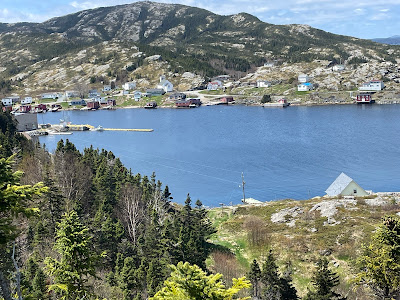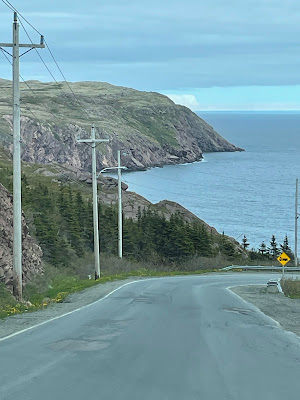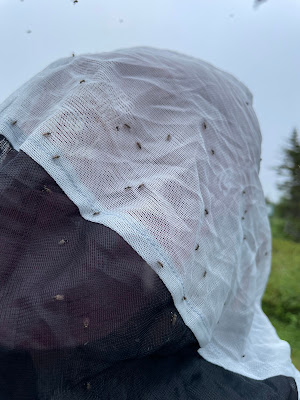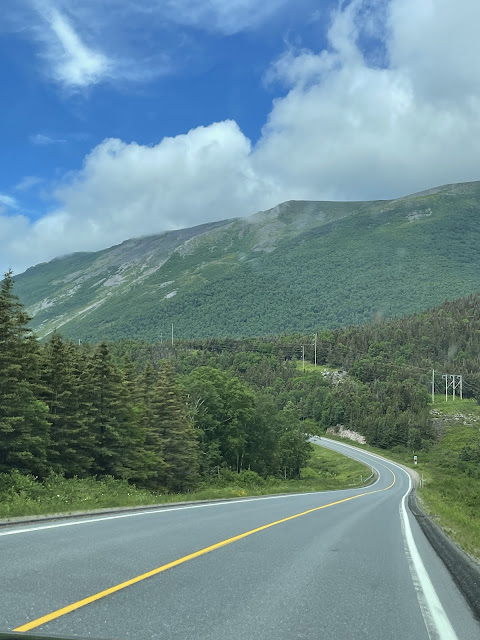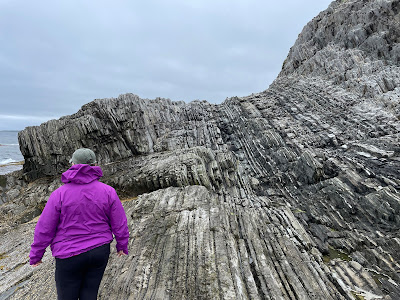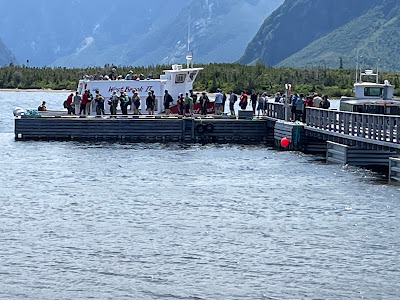Hubby put a lot of planning into this trip. He researched, booked ahead for spots in popular areas, like the national parks and on the ferries. He planned out the entire route in detail so that we could see everything.
But there are always things you can’t plan for. It turned out that we were just a little too early for the whales in the southeast, and when we got north we were a little too late for the icebergs. And the rolling of the Caplin (which I hear is a sight to see - tiny fish mating on the beaches in one moving mass) we missed that by one day. Because the capelin don’t go to all the beaches at the same time, one has to try to find them wherever or whenever they may land. And they are fast little critters.
We saw lots of other things. Mountains, ancient rocks, unique fishing villages. We hit as many museums as we could, learning about the early peoples and their lifestyles, and also the European visitors who often only came for the summer fishing. This rocky island in the North Atlantic was so rich in fish stock, that Europeans made treaties dictating where along its shores each country could fish. Totally leaving the native population out of the equation.
Unfortunately they did such a good job fishing that the fish eventually could not rebuild to the level that it was. Now, some 500 years later, Newfoundland has become quite protective of its fish stock. All the sea bound rivers that we passed are highly regulated as to when, how, and how much you can fish. Any trout or salmon in those rivers can only be caught by fly fishing, and there is an annual limit of only two salmon per fisherman. Each fish caught must be tagged, like in moose hunting, and trust me, the wardens are watching.
We went on over to Labrador for two reasons. It gave us an opportunity to see another part of Canada that we’ve not yet seen, and a chance for us to continue learning the fishing history of Newfoundland. There definitely was a lot of fishing for cod and other fish off the coast of Labrador, but the more important resource that was taken from that area were the whales.
Europeans again came for the summer months to catch the slow moving right whales that followed the krill up the strait between the two land masses. They only stopped coming when the number of whales swimming up the strait diminished. Either from over hunting, or because the mammals recognized that area as a Bermuda Triangle of sorts.
Labrador shouldn’t have been a surprise, but it was. We took the ferry from the northern tip of Newfoundland, where the mountainous terrain of the rest of the island had finally smoothed out to mostly flat caribou land. Only 20 kms separate the two, and yet driving up the Labrador coast was like driving up the Gaspe coast. We could literally look across the strait to the flatter tundra of the island as we climbed steep hills and then had to brake all the way down the other side because of the town below.
What wasn’t a surprise, but was not pleasant, were the black flies. We were prepared and had brought bug shirts, but the swarms were determined to enter the trailer with you and stuck to your hair and clothes when you opened the door. A bug invasion in our tiny space was not welcome.
I was in awe of the park official that took no notice of them when outdoors. But I was horrified when he said that they appear in May and don’t leave until September. Kinda sounds like those foreign fishermen. Or bad tourists.
Well, I can promise everyone that we learned from the past and did not just come to take the fish and leave.
My hubby tried, but couldn’t catch a thing.
W
